Get ready to break out your soup pot, and best food tweezers because today’s blog post is all about How to Style Creamy Soups!
Soups are undoubtedly the star of the cold months, from rejuvenating broths, to hearty minestrones, to smooth soups made of roasted squash; and let’s not forget the luxurious categories of true bouillabaisse, gooey bubbling cheese laden soups, and cream chowders. Whatever your soup craving, there’s something to satisfy.
Below, you’ll discover my approach to styling creamy soups like chowders, or ingredient filled soups, and some tips for helping you troubleshoot some of the common roadblocks mentioned above.
Looking for other Food styling posts?
This is part 7 in my “How to Style…” series where I show you how to style everything from chicken to brownies! Part 6 was all about Styling Ice Cream and Foods that Melt, read that post here.
*NOTE* – The recipe featured in the images in this post are a Creamy Cajun Shrimp Corn Chowder by Sharon Nge.
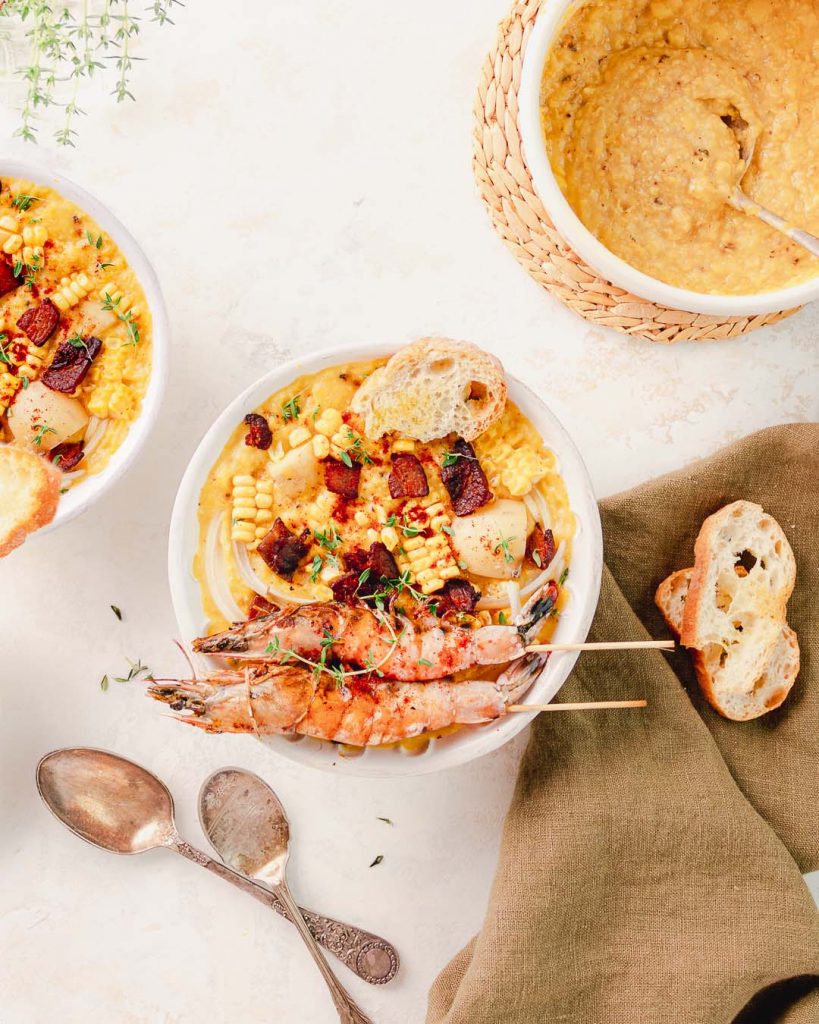
Why do my soups look so unappealing on camera?
Here’s the tea…while every soup is pretty much a winner in the flavor department, they are tough as heck to photograph.
You may have come across one of these common roadblocks when styling or photographing soup:
- The soup is brown, and looks unappealing
- The soup looks oily or shiny
- All the ingredients get lost in the image
- The soup looks flat, and it’s hard to tell what the flavor is
- The soup gets lost in the large bowl or dish
However, it’s our job as food stylists and photographers, to make even the most plain dish look as enticing and delicious as possible, and I don’t know about you, but I love the challenge! Soup is not the most obvious beauty, but, with some practice, it’s a great opportunity to explore color, texture and storytelling.
How I Style Creamy Soups
If you’re a visual learner, above is a video showing you how I styled this Creamy Shrimp Corn Chowder Soup!
The key to styling appetizing soups is to PLAN, PLAN PLAN.
I’m pretty sure I’ve said this in every “How to Style…” post, but planning really is the most important thing, more so when styling soups because the approach is completely different. If I were to photograph a soup for eating straight out of the pot, it would be visually unappealing because all the ingredients have mushed together.
When styling this Creamy Shrimp Corn Chowder, I planned out the cooking in separate parts. The corn, shrimp and potato were key ingredients I wanted to stand out, so I saved a portion of those ingredients and prepared them separately so they would look as good as possible.
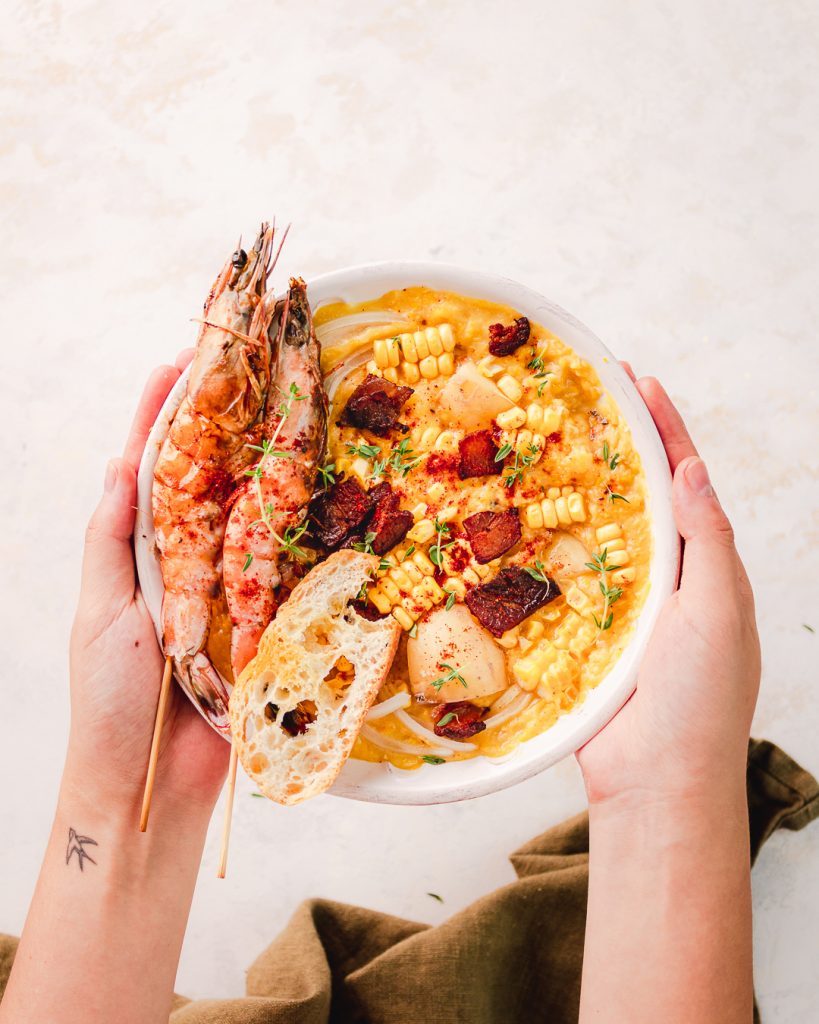
How to know what bowl to use when styling soups
The bowl, deep dish or pot you select to style your soup in is very important as it’s going to be framing your soup.
So here are some things to keep in mind when selecting this “vessel”:
- Size: Bowls with a small width are cute, but there’s less surface area for you to style. This type of bowl is best for soups with a few ingredients.
- Depth: The deeper the bowl, the more soup you’ll need to fill it up. Keep in mind that the bowl needs to be at
- TIP: If you really want to use a bowl but it’s deep, you can stack a smaller bowl inside or glass marbles so your soup sits higher.
- Color: The purpose of props is to elevate and draw attention to the subject. Soups can have a variety of colors and ingredients, so make sure the bowl’s color and design doesn’t distract from the soup itself.
For this creamy chowder, I used a simple white bowl, with minimal scalloping detail (for interest), and a slight matte finish to avoid reflections. The bowl is a little deep, so I placed a small plate inside.
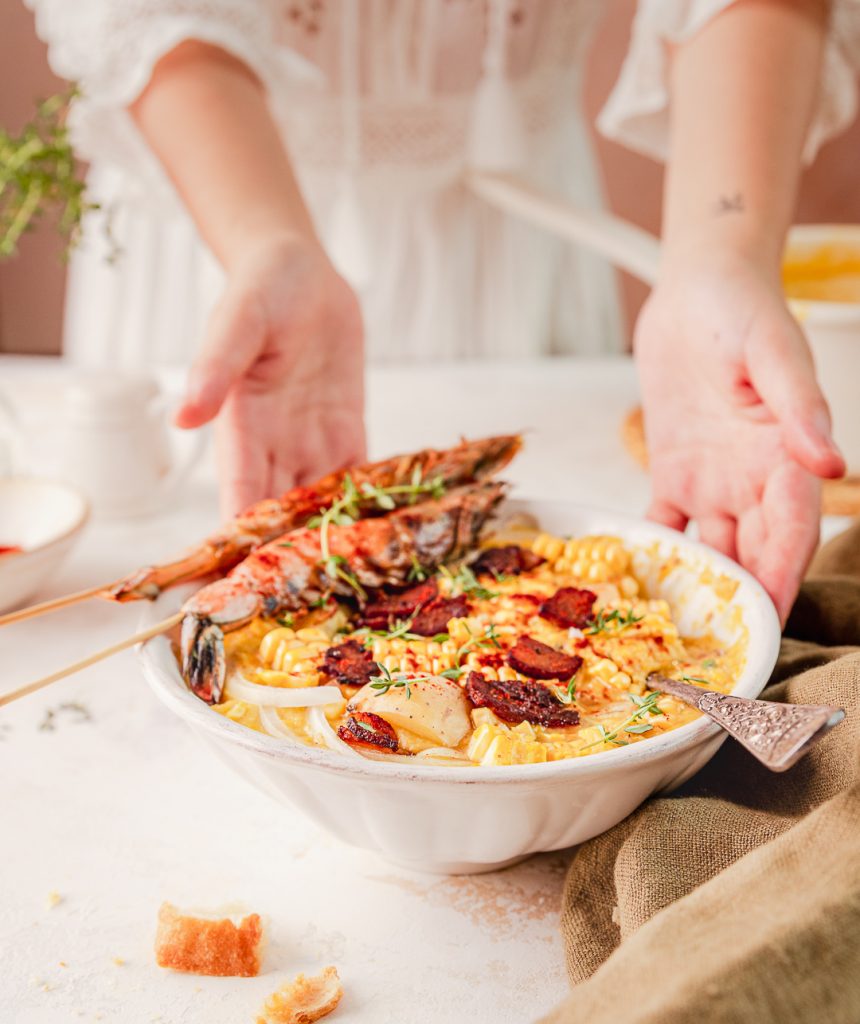
Build your soup from bottom to top
Styling soup is like building a cake: start with the main layers, and end with the garnishes and “beauty” elements.
Using this cake analogy, if cake layers are assembled first, then your main soup component should also be placed first. Once the bowl is 75% filled, you can start placing some of your “flavor” cues and large ingredients. In this case, my potato pieces and larger-cut corn.
If you’re unsure about what order to place your ingredients in, remember it’s always from “biggest to smallest”. Larger ingredients need more room, so place those first.
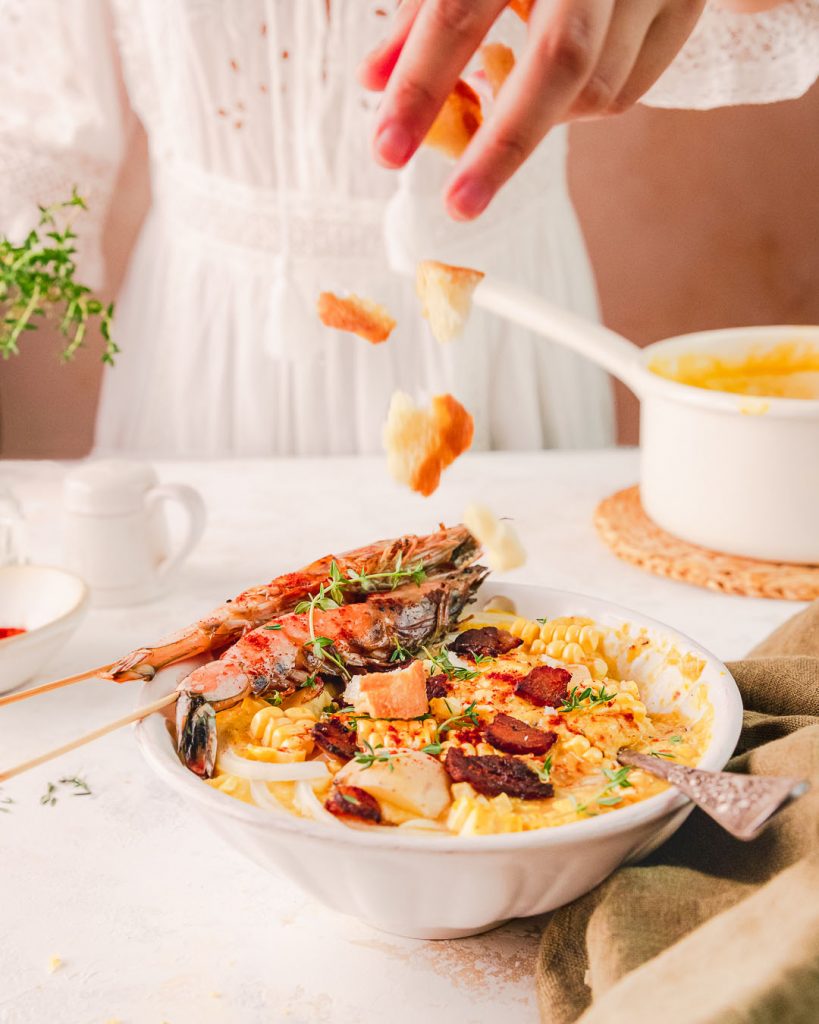
Focus on the hero ingredients when styling the soup
Every dish, regardless of the number of ingredients, has a hero. The hero is the most important ingredient: either because of its unique look, or the importance in flavor it adds to the dish.
I chose shrimp as the “hero ingredient” because of its visual interest, and because it makes this chowder a little bit more unique than a traditional corn chowder. Since it’s the hero, I intentionally placed the other ingredients to further draw attention to the shrimp.
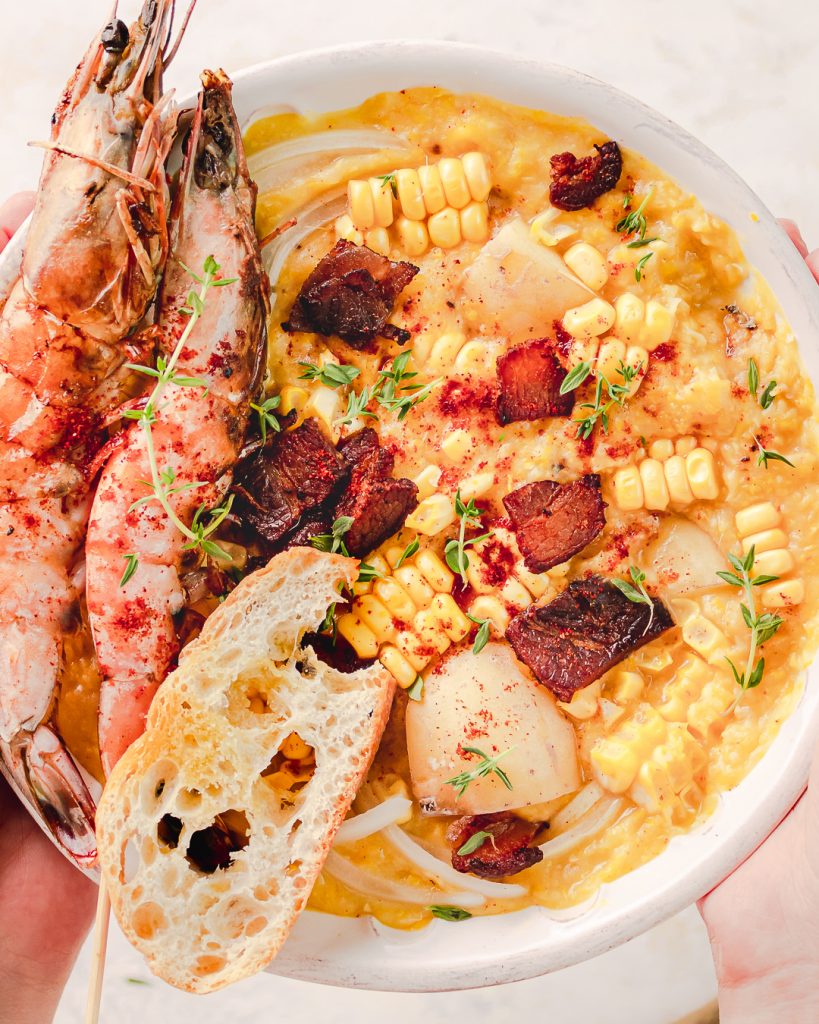
Never leave a soup ungarnished
This is where you can really let your creativity take over, and have fun with the styling. Don’t be afraid to go heavy handed with garnishes, especially if the soup itself is plain. They’re also flavor cues that tell your audience about the flavor of the soup.
The best part about garnishes, is that they come in a variety of textures and sizes. A crunchy garnish on a creamy soup provides that fun contrast in texture that makes an image come alive.
When garnishing soup, I never skimp out on the course black pepper and spices! Here are some garnish ideas to brighten up your dish:
- Green leafy herbs; Rosemary, thyme, parsley to name a few
- Baguette or bread
- Olive oil – this makes such a difference to soups that are one color (monochromatic) or plain
- Yogurt or cream – for the same reason above
- Nuts or dried fruit
- Cheese – shredded, cubed or melted, they all look good!
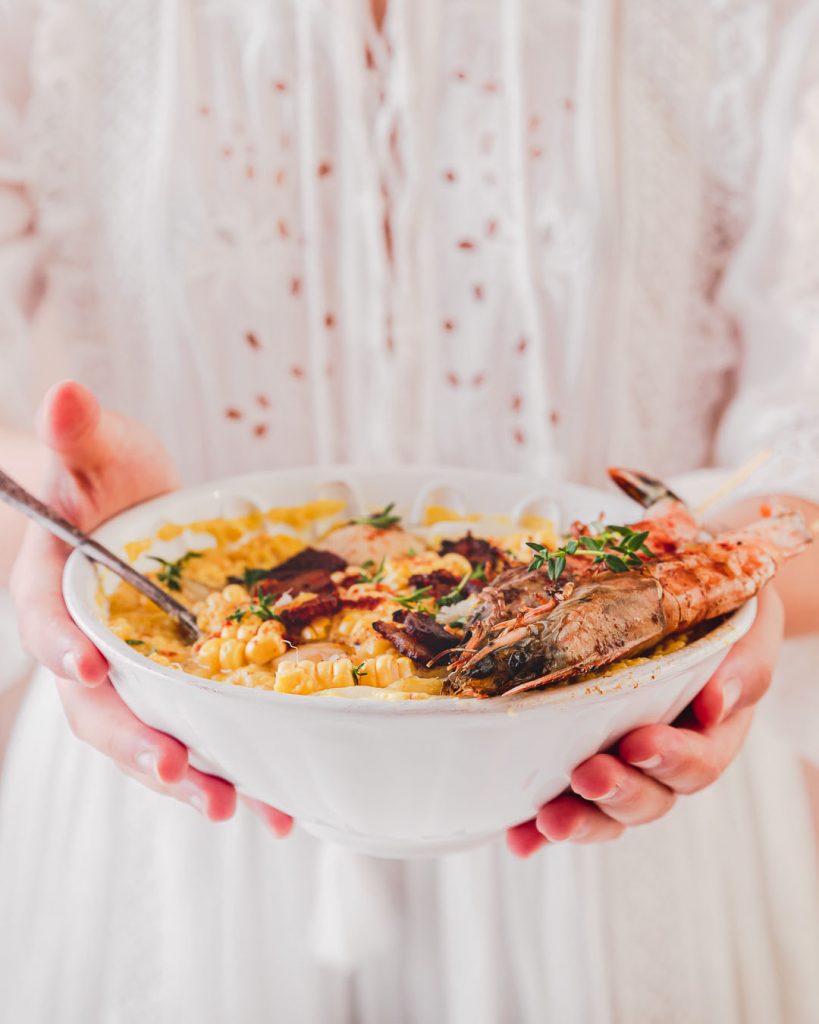
BONUS: How to avoid oily reflections when styling and photography soup
Reducing reflections in photography is less about styling than it is about lighting; however, there are a few things you can do when cooking and styling your soup to make this easier.
Firstly, when cooking the soup, skim as much of the oily foam as possible especially if your soup contains meat. If the soup is mostly bright colors, try adding depth by selecting a darker bowl, or with garnishes that provide color contrast.
Lastly, remember that when styling a bowl of soup, the props, backdrops and supporting elements you add to the scene are equally important for setting the mood and story behind the image.
I hope you find these tips and behind-the-scenes helpful when you’re planning or styling creamy soups.
I love sharing what I’ve been learning about food styling, so comment below and share with me your biggest take away, and what you want to learn how to style next!
Till next time! Sharon
Make sure to tag me on Instagram @whiskfullyso and leave a review below if you found this post helpful. I hope you loved it! For more delicious ideas follow me on Pinterest.
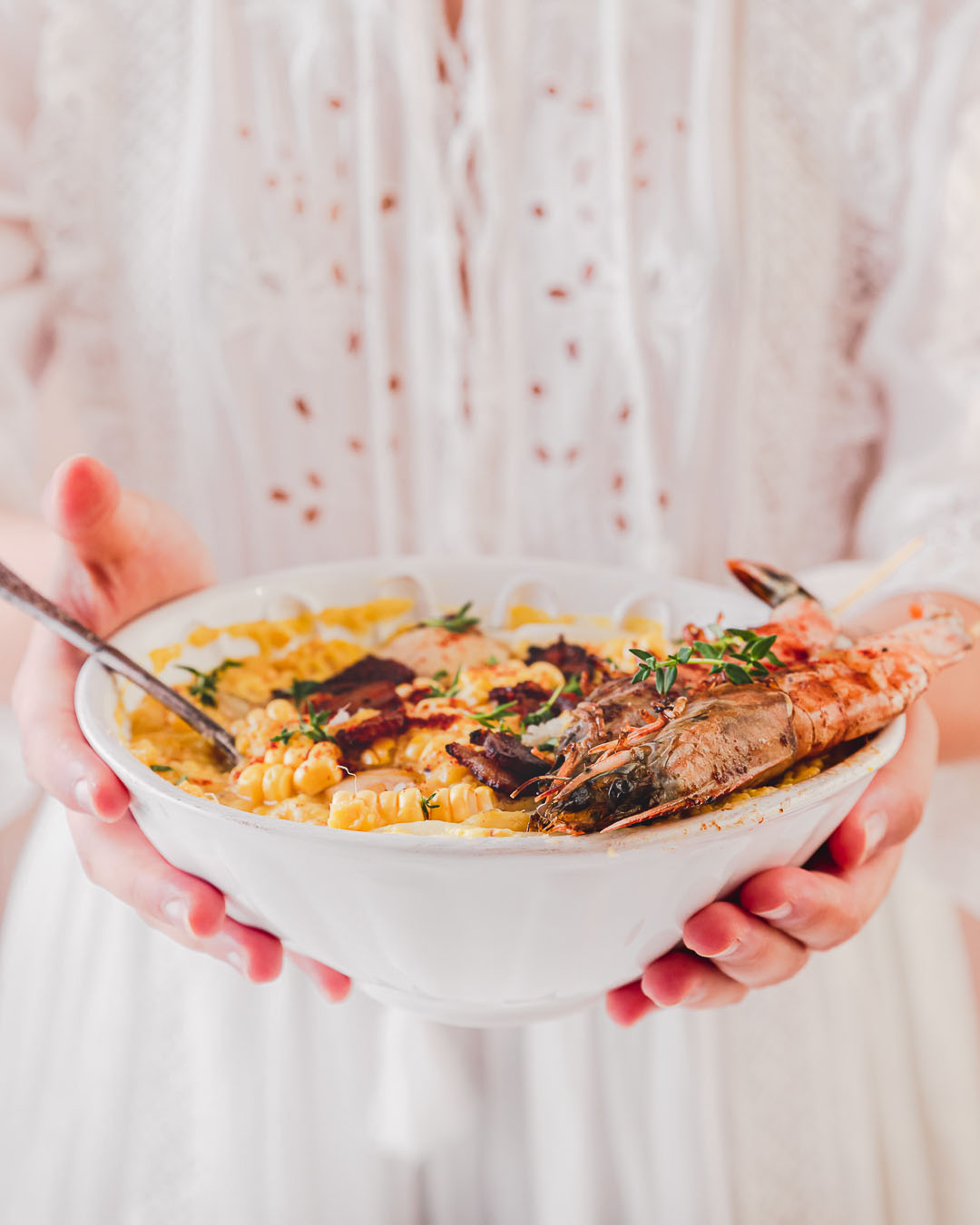

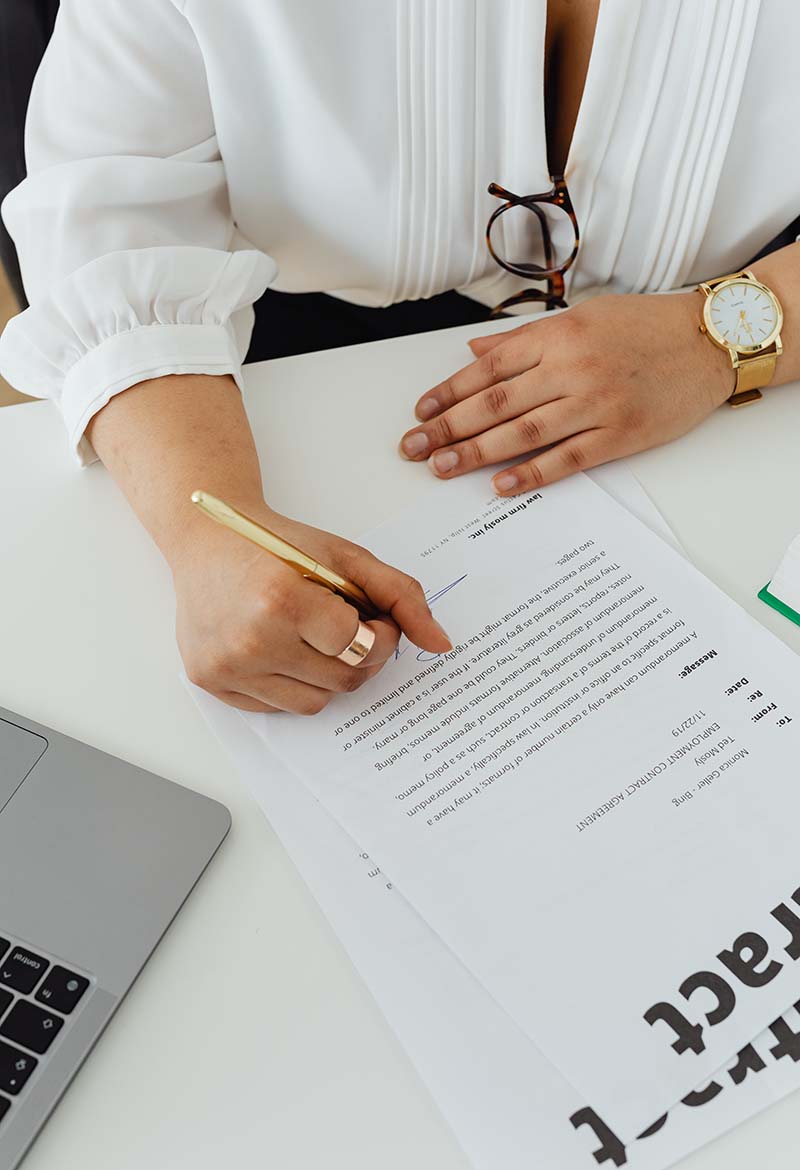
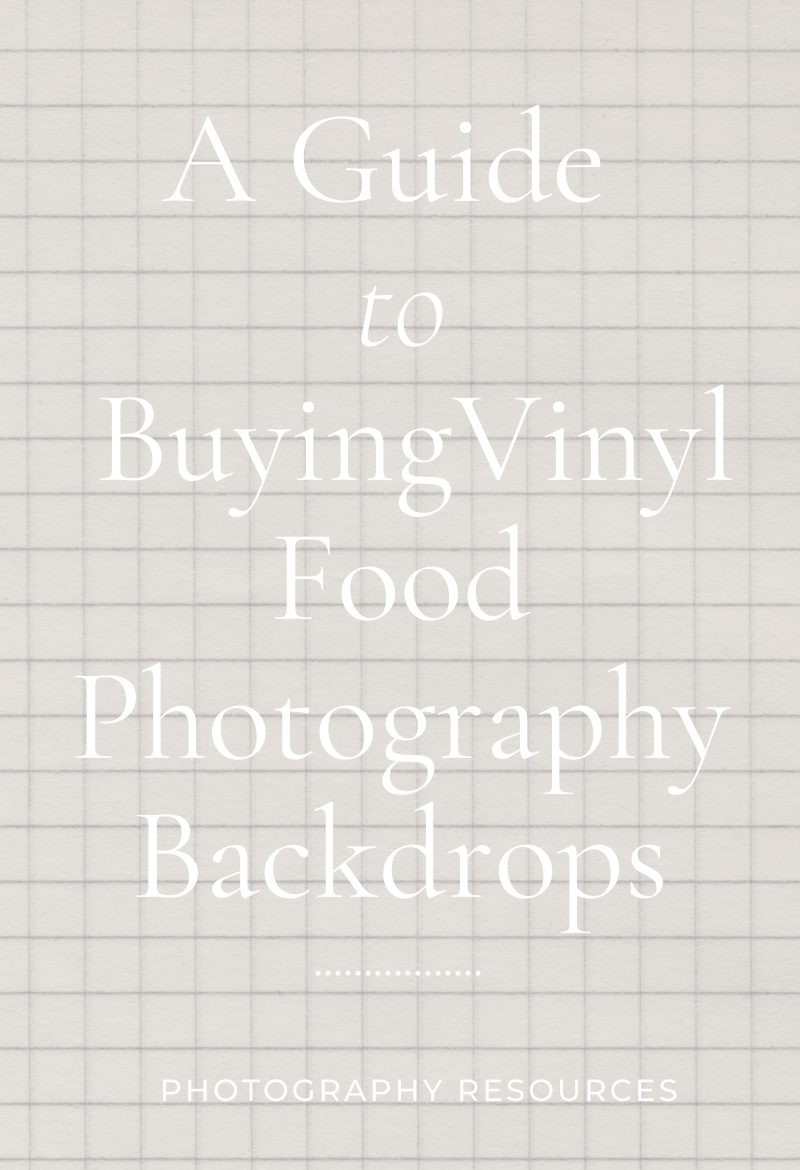
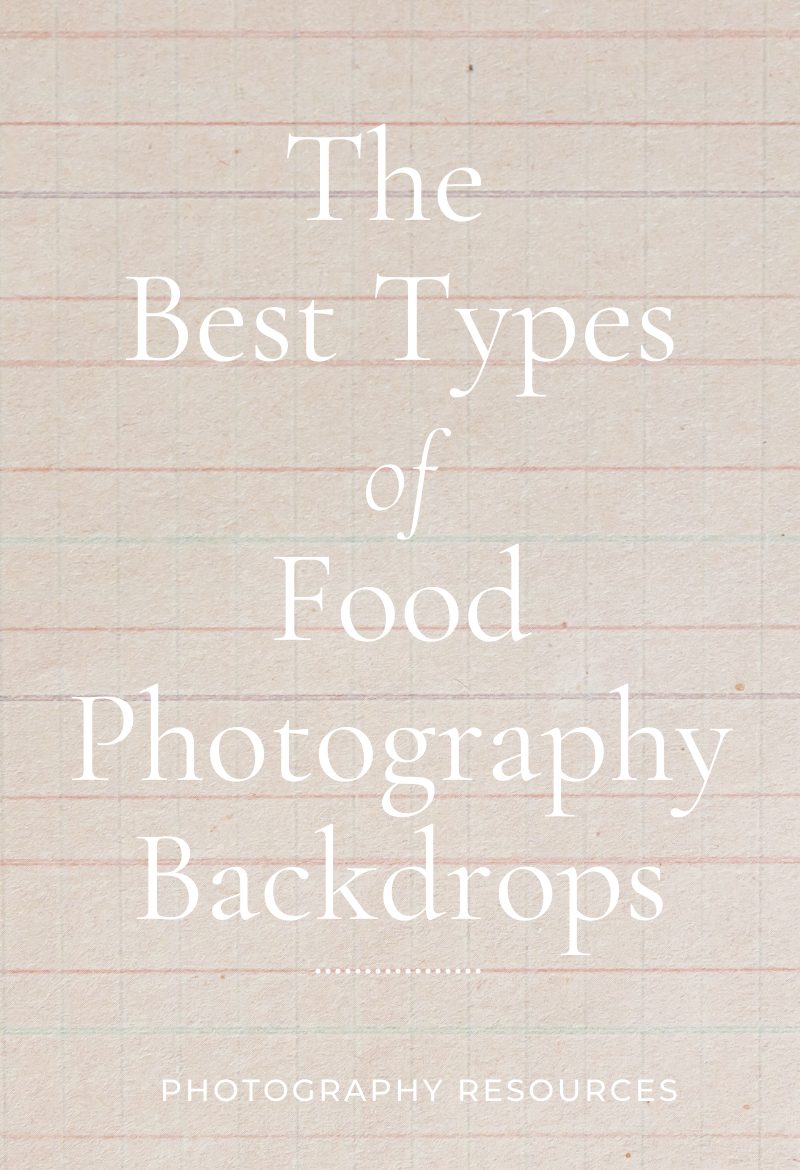
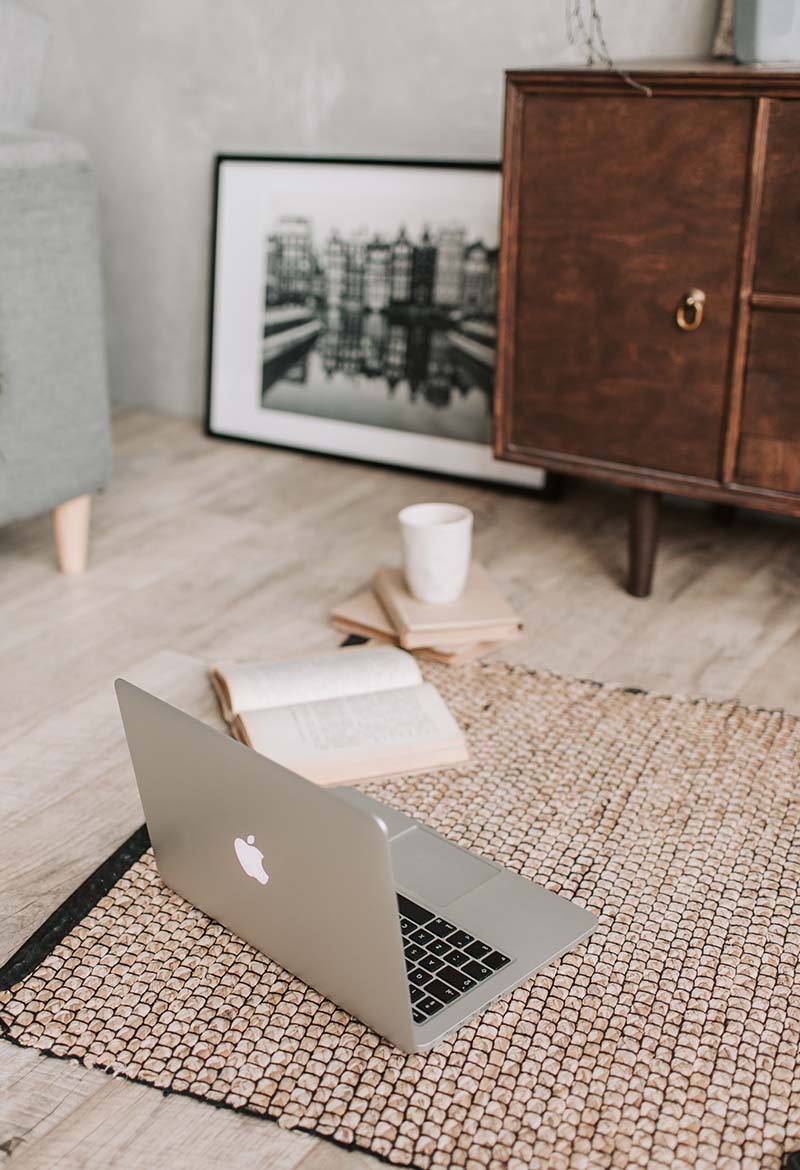
Read the Comments +